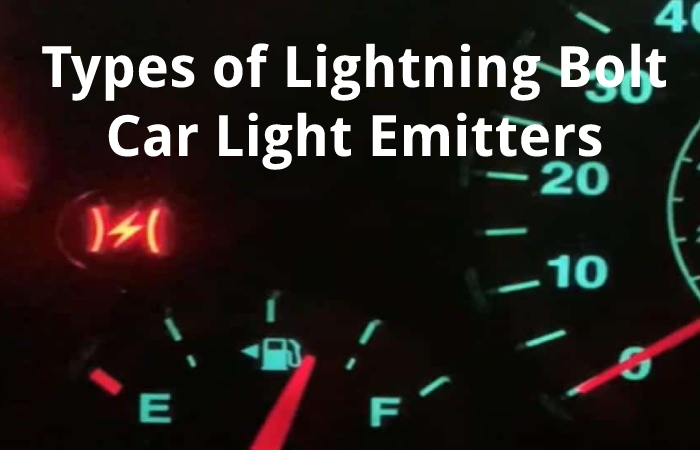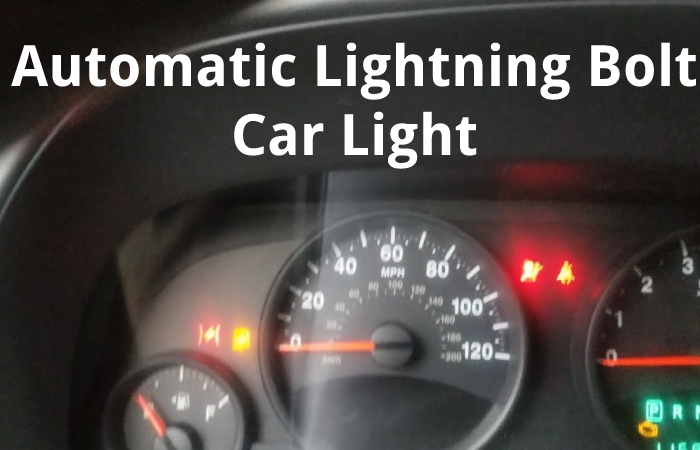Table of Contents
Lightning Bolt Car Light
The lightning bolt car light is a system of a car (and in general of any vehicle that circulates on public roads) that is essential because, as you well know, it allows us to see and be seen. Although we may not realize it, it is another security system (and not just a set of lights that will enable us to drive at night). Since the car is a car, it has evolved along with the available technology.
Being guarantee “to be seen” (it is enough not in the dark), this section evolve little. The incorporation of daytime running lights could consider the latest iteration (they are already mandatory cars manufacture in Europe), as well as the introduction of lower consumption lamps (LEDs, for example, which in themselves are not even lamps as such). A significant advance seen in the last 10 or 15 years in the section of “seeing” more and better.
Types of Lightning Bolt Car Light Emitters

There are four types of lamps (colloquially light bulbs) that today mount in our cars and are not strictly modern. Incandescent (or incandescent) lamps are more than 130 years old (although they evolves somewhat in this time), while the fashionable LEDs are (perhaps you won’t believe it) more than 80 years already.
Incandescent
In incandescent lamps, passing an electric current through a metallic filament (today tungsten), which acts as a resistance, turns red and gives off light (and heat). The filament enclose in a glass ampoule that has evacuate (or filled with a noble gas, e.g. krypton). They are the most inefficient (the ones that consume the most) and the ones that last the least, so their days may number.
Halogen
Halogen lamps: the principle is the same, only if the ampoule fill with a halogen gas instead of a vacuum, the filament lasts longer, gives off more light (with the same consumption), and is whiter. As higher temperatures reach, the ampoule is no longer made of silica sand glass (the conventional glass) but quartz sand glass (and for that reason, when placing it, the glass ampoule should not touch with bare fingers). A halogen bulb damages that type of glass because of the slightly acidic pH of the skin (from the grease and sweat that it can give off).
Xenon
Xenon lamps (or HID, for High-Intensity Discharge) are also known as gas discharge lamps. We do not have a filament inside a quartz glass bulb, but two tungsten electrodes are very close but not in contact. The ampoule fill with mercury vapors, metallic salts and xenon gas. When current reaches one of the electrodes, it “jumps” to the other, producing an electric arc that gives off a large amount of white light (slightly bluish).
How is Reflection made Inside Car Headlights?
The first tries to achieve a powerful light for safe driving, with a specific diffusion near the vehicle, to obtain good lighting that allows the pavement and the ditch seen well. On the other hand, it has to prevent this powerful light from dazzling the drivers of vehicles coming in the opposite direction, a lower dippers light need, which without dazzling, allows sufficient lighting to maintain a reasonable speed with enough security.
Road lighting achieve by placing the lamp inside the headlight parabola so that its filament coincides with its geometric focus. Thus, the reflector returns the light emitter by the filament so that together they form a parallel light beam.
Different Points of Lightning Bolt Car Light
The idea of a ray of light can examine from various opinions of view, with different ways of understanding it, such as the following three:
Physical optics: is the division of physics that considers lighting a wave and explains certain phenomena. In that would possible if understood as a ray. For example, diffraction (the ability to change the direction that waves have when they encounter certain obstacles. In something that lightning could not do since it does not have this property of the wave) and polarization. A property that produces, for example, example, the effect of elimination of glare. If when one or more of the various plan in which light waves vibrate prevent them from passing).
Headlamp Design, Reflectors and Projectors
Years ago, the headlights were translucent, and the dispersion glass of the same did not allow to see the interior. Glass was the main protagonist because it carve (or economically could) internally. Is from an optical point of view (forming horizontal prisms), and was responsible for distributing the light beam.
Today we change to transparent dispersion lenses (generally made of polycarbonate, and eye, sensitive to UV radiation. And also else an ellipsoidal lens (in projection headlamps, which achieve approximately 10% more light).
Automatic Lightning Bolt Car Light

As humans tend to be lazy (or absent-minded), the increasing amount of electronics. In our cars allows us to integrate a small brightness sensor in the windshield (generally in the upper part. It behind the rear-view mirror). Typically, this sensor is a photodiode (a diode and semiconductor material) that excite by light and generates some electrical current.
More Visibility for Lights and Headlight Washers
For many years drivers want more light, and in different circumstances, complementary headlights and strategies were born. Fog lights characterize by generating a shorter and broader beam light direct towards the ground. It is trying to minimize the dispersion of light that occurs when passing through clouds of dust. If sand or smoke and fog getting through the fog (tiny droplets water suspend in the air).
The headlight washers were another strategy for more light when things complicate. They certainly have not been very successful. Formerly consists of a water dispenser and a rubber headlight clean. Is today, they have simplifies (and cheaper) pressurize water dispensers (which can fixe or retractable).
Additional Lightning Bolt Car Light in Turns
The additional lights in turns are relatively recent; although they do not have a high cost. In there are not many cars that bring them as standard equipment (although they are increasing more and more). It consists of turning on an additional light to the low beam, on the side towards. In which the steering wheel is turn, which illuminates not forward, but to the side.
It’s straightforward; there is only one rotation sensor in the steering. In which activates the light from a certain angle of rotation of the steering wheel. There is one more bulb, either in the main headlight. In the fog light (sometimes the most straightforward systems do not add any more bulbs. And also use only the fog light’s own, although it is not ideal).
Conclusion
Light, on the other hand, is a concept that derives from lux. It is the physical agent that enables the visibility of bodies. The current of electricity and the brightness radiated by something also call light. A ray of light, therefore, is a line with the same direction of propagation as light. And also line represents how the luminosity spreads at a graphic or symbolic level.
Also Read: Characteristics of a Successful Entrepreneur – Types, and More
